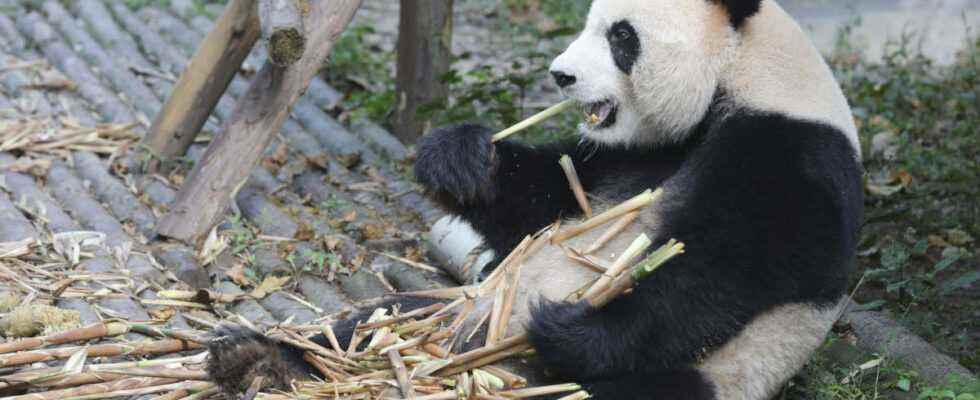How did the panda become a vegetarian? Until recently, it was hard to say. But the discovery in China of fossils of an ancestor of the panda has allowed researchers to solve the mystery around the “sixth thumb” of the mammal, authorizing it to hold the bamboo stalks which constitute the majority of its diet.
These fossils, about six million years old, were discovered in Yunnan province in southwestern China. Among them is a particularly large wrist bone, called the radial sesamoid.
A carnivore turned herbivore
This is the oldest evidence for the existence of a “sixth finger” in the giant panda, which allows it to grasp and break thick stalks of bamboo, the researchers pointed out in the latest edition of the publication. review Scientific Reports. This fossil belongs to a now extinct panda ancestor called Ailurarctos, who lived in China between six and eight million years ago.
“The giant panda is…a rare case of a large carnivore…became a herbivore,” said Wang Xiaoming, curator of vertebrate paleontology at the Los Angeles County Museum of Natural History. “The Ailurarctos ‘fake thumb’ shows (…) for the first time the probable timeline and evolutionary stages of bamboo feeding in pandas,” he added.
Questions so far remained unanswered
While the existence of the “false thumb” had already been known to researchers for around a century, the fossil evidence for this bone sheds light on several questions that have long remained unanswered, including how and when this extra finger, which does not exist in no other bears, evolved. Millions of years ago, pandas swapped the omnivorous, protein-rich diet of their ancestors for the nutrient-poor, year-round bamboo in southern China.
They eat for up to 15 hours a day and an adult panda can consume 45 kg of bamboo daily. Although their diet is primarily vegetarian, giant pandas are also known to occasionally hunt small animals.
